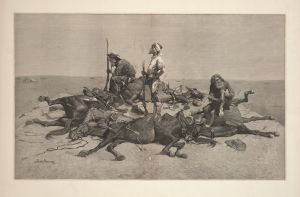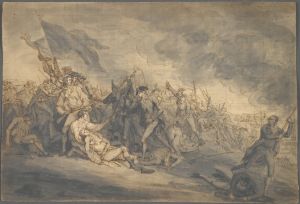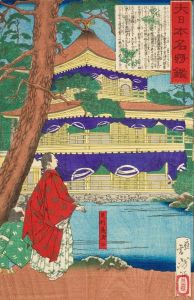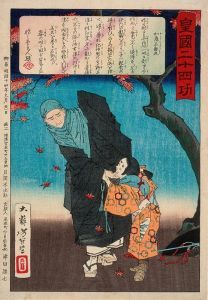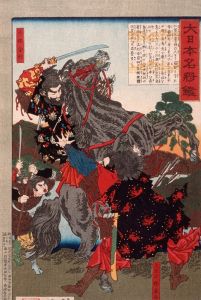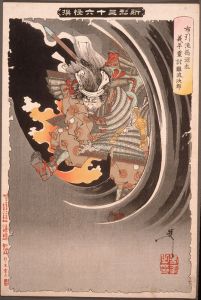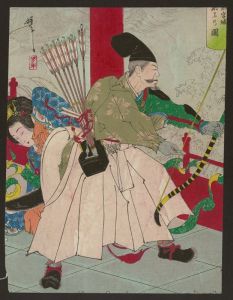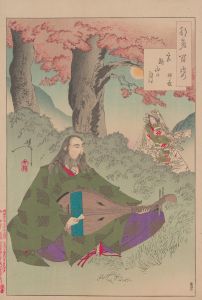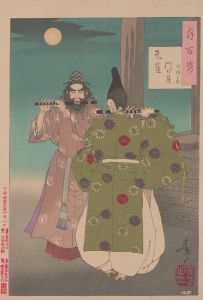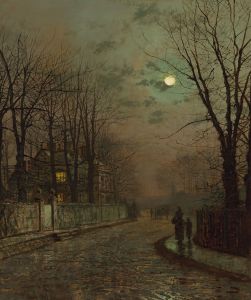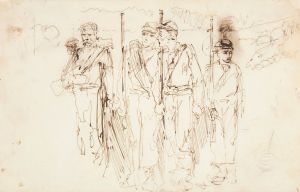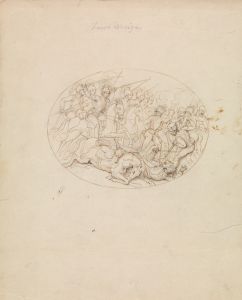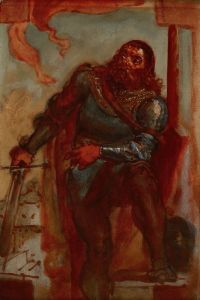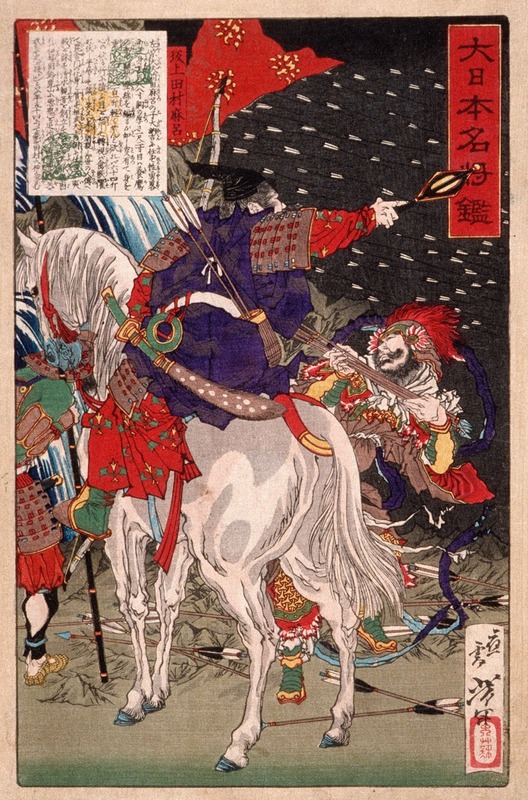
Sakanoue Tamuramaro in Rain of Arrows
A hand-painted replica of Tsukioka Yoshitoshi’s masterpiece Sakanoue Tamuramaro in Rain of Arrows, meticulously crafted by professional artists to capture the true essence of the original. Each piece is created with museum-quality canvas and rare mineral pigments, carefully painted by experienced artists with delicate brushstrokes and rich, layered colors to perfectly recreate the texture of the original artwork. Unlike machine-printed reproductions, this hand-painted version brings the painting to life, infused with the artist’s emotions and skill in every stroke. Whether for personal collection or home decoration, it instantly elevates the artistic atmosphere of any space.
"Rain of Arrows" is a woodblock print by the renowned Japanese artist Tsukioka Yoshitoshi, part of his series "Courageous Warriors" (also known as "Yoshitoshi's Courageous Warriors"), which was published in the late 19th century. This particular print depicts Sakanoue no Tamuramaro, a prominent historical figure in Japan, known for his military exploits during the early Heian period.
Sakanoue no Tamuramaro (758–811) was a distinguished general and shogun under Emperor Kanmu. He is celebrated for his role in the subjugation of the Emishi, an indigenous people of northern Honshu, Japan. His military campaigns were crucial in expanding the influence of the central Japanese government into the northern territories, which were previously resistant to imperial control. Tamuramaro's success in these campaigns earned him the title of "Sei-i Taishogun," which translates to "Barbarian-subduing Generalissimo," a title that would later become synonymous with the shogunate, the military government that ruled Japan for centuries.
In Yoshitoshi's "Rain of Arrows," Tamuramaro is depicted amidst a dramatic and intense battle scene. The print captures the chaos and ferocity of warfare, with arrows raining down upon the battlefield, a common motif in Japanese art to symbolize the peril and heroism of samurai warriors. Yoshitoshi's work is known for its dynamic composition and vivid detail, which are evident in the portrayal of Tamuramaro's determined expression and the intricate armor he wears. The artist's use of color and line work adds to the sense of movement and urgency in the scene.
Yoshitoshi (1839–1892) was one of the last great masters of the ukiyo-e genre of woodblock printing and painting. His career spanned a period of great change in Japan, as the country transitioned from the Edo period into the Meiji era, a time marked by rapid modernization and Western influence. Despite these changes, Yoshitoshi remained dedicated to traditional Japanese themes and techniques, often focusing on historical and legendary subjects, as well as the supernatural.
The "Courageous Warriors" series, to which "Rain of Arrows" belongs, is a testament to Yoshitoshi's fascination with the valor and martial prowess of Japan's historical figures. Through his art, Yoshitoshi sought to capture the spirit of these warriors, celebrating their bravery and skill. His work not only reflects the historical narratives of the time but also serves as a bridge between the traditional and the modern, preserving the cultural heritage of Japan while adapting to new artistic influences.
"Rain of Arrows" is a fine example of Yoshitoshi's ability to convey emotion and action through the medium of woodblock printing. The print not only highlights the historical significance of Sakanoue no Tamuramaro but also showcases Yoshitoshi's mastery of the ukiyo-e style, characterized by its bold lines, vibrant colors, and attention to detail. This work remains an important piece in the study of Japanese art, offering insight into the country's history, culture, and artistic evolution during a pivotal era.





